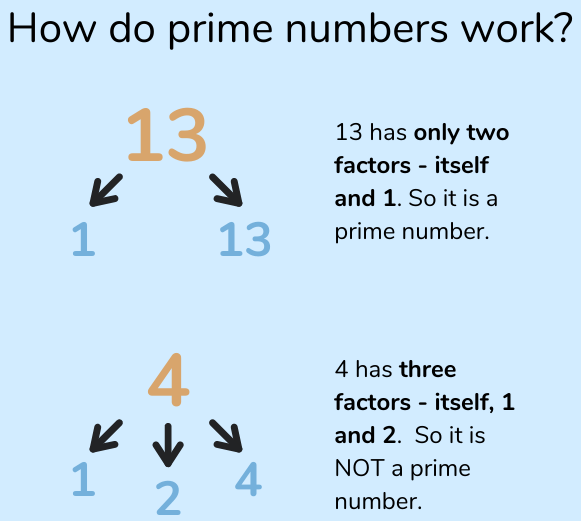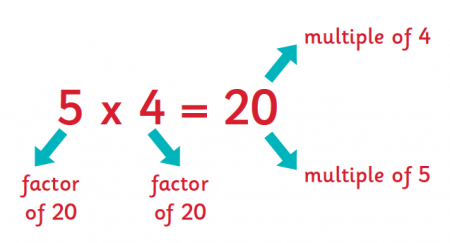Back to: MATHEMATICS JSS 2
Welcome to Class !!
We are eager to have you join us !!
In today’s Mathematics class, We will be discussing Whole Numbers Decimal Numbers. We will also be looking at Multiples and Factors of Numbers. We hope you enjoy the class!
Content
- Whole Difference between Whole Numbers and Decimal Numbers
- Whole numbers in Standard Form and Decimal Numbers in Standard Form
- Factors, Multiples and Prime Numbers

Difference between Whole Numbers and Decimal Numbers
A whole number is a number without fraction. For example 1, 2, 3, 4…1000, 38888 are examples of whole numbers. 71/2 is not a whole number. A decimal number is a fractional number less than 1. It is smaller to a whole number. Examples – 0.1, 0.01, 0.001etc
Whole Numbers in Standard Form and Decimal Numbers in Standard Form
Whole numbers in standard form are expressed in the form of A x 10n such that A is a number between 1 and 10, n is a whole number.
Example
Express the following in standard form (a) 200 (b) 4100 (c) 300000
Solution
- 200 = 2 x 100 = 2×102
- 4100 = 4.1 x 1000 = 4.1 x 103
- 300000 = 3 x 100000 = 3 x 105
Evaluation
Express the following in standard form (a) 500 (b) 36000 (c) 7200000

Decimal fractions such as 0.00 and 0.000001 can be expressed as powers of 10
e.g. 0.0001 = 1/10000 = 1/104 = 10-4
Thus, any decimal fraction can be expressed in a standard form
e.g. 0.008= 8/1000= 8/103 = 8×1/103 = 8×10-3
Therefore, the number 8×10-3 is in standard form ax10 and n is a negative integer while A is a number between1 and 10
Example
Express the following in standard form (a) 0.0023 (b) 0.00034 (c) 0.125
Solution
- 023 = 23/1000 = 2.3/102 = 2.3 x 10-3
- 00034 34/100000= 3.4/104 = 3.4x 10-4
- 125 = 125/1000 = 1.25/101 = 1.25×10-1
Evaluation
Express the following in standard form (a) 0.0067 (b) 0.00082 (c) 0.012
READING ASSIGNMENT
New General Mathematics, UBE Edition, chapter 1, pages 27-28
Essential Mathematics by A J S Oluwasanmi, Chapter 1, pages 1-4
FACTORS, MULTIPLES AND PRIME NUMBERS
The factors of a number are the whole numbers that divide the number exactly. For example, the factors of 10 are 1, 2 and 5.
A prime number has only two factors, itself and 1. The following are examples of prime numbers 2, 3, 5, 7, 11, 13…. However, 1 is not a prime number.

A multiple of a whole number is obtained by multiplying it by any whole number.

Example
- Write down all the factors of 18.
- State which of these factors are prime numbers
- Write the first three multiples of 18
- Express 18 as a product of its prime factors in index form
Solution:
- Factors of 18 are 1, 2,3,6,9 and 18.
- Prime numbers of the factors of 18 are 2 and3
- The first three multiples of 18 are 1×18 = 18, 2×18=36, 3×18=54 => 18, 36 and 54.
- 18 = 2x3x3 = 2 x 32 in index form
Example 2:
- Write down all the factors of 22.
- State which of these factors are prime numbers
- Write the first three multiples of 22
Solution:
- Factors of 22 are 1, 2, and 11.
- Prime numbers of the factors of 22 are 2 and11
- The first three multiples of 22 are 1×22 = 22, 2×22=44, 3 x 22=66 => 22, 44 and 66.
Evaluation
- Write down all the factors
- State which of these factors are prime numbers
- Write the first three multiples of each of the following numbers below
- Express each as a product of its prime factors in index form
- (A) 12 (B) 30 (C) 39 (D) 48
READING ASSIGNMENT
New General Mathematics, UBE Edition, Chapter, 1 page 13-14
Essential Mathematics by A J S Oluwasanmi, Chapter 1, pages 1-4
WEEKEND ASSIGNMENT
- Which of these is not a prime number (a) 2 (b) 5 (c) 7 ( d) 1
- Express 360000 in standard form (a) 3.6 x 105 (b) 3.6 x 106 (c) 3.6 x 103 (d) 3.6 x 104
- Express 0.000045 in standard form (a) 4.5 x 10-2 (b) 4.5 x 103 (c) 4.5 x 10-5 (d) 4.5 x 10-6
- Which of these is not a factor of 42 (a) 9 (b) 6 (c) 7 (d) 2
- Express 50 is product of its prime factor (a) 2 x 52 (b) 2 x 5 (c) 22 x 52 (d) 2 x 5
THEORY
- For each number 42,45,48,50
- Write down all its factors.
- State which factors are prime numbers?
- Express the number as a product of its prime factors.
- Express the following in standard form (a) 345000 (b) 0.00034 (c) 0.125
We have come to the end of this class. We do hope you enjoyed the class?
Should you have any further question, feel free to ask in the comment section below and trust us to respond as soon as possible.
In our next class, we will be talking about LCM, HCF and Perfect Squares. We are very much eager to meet you there.

Good job
Thanks
thanks
Thank you for your good work